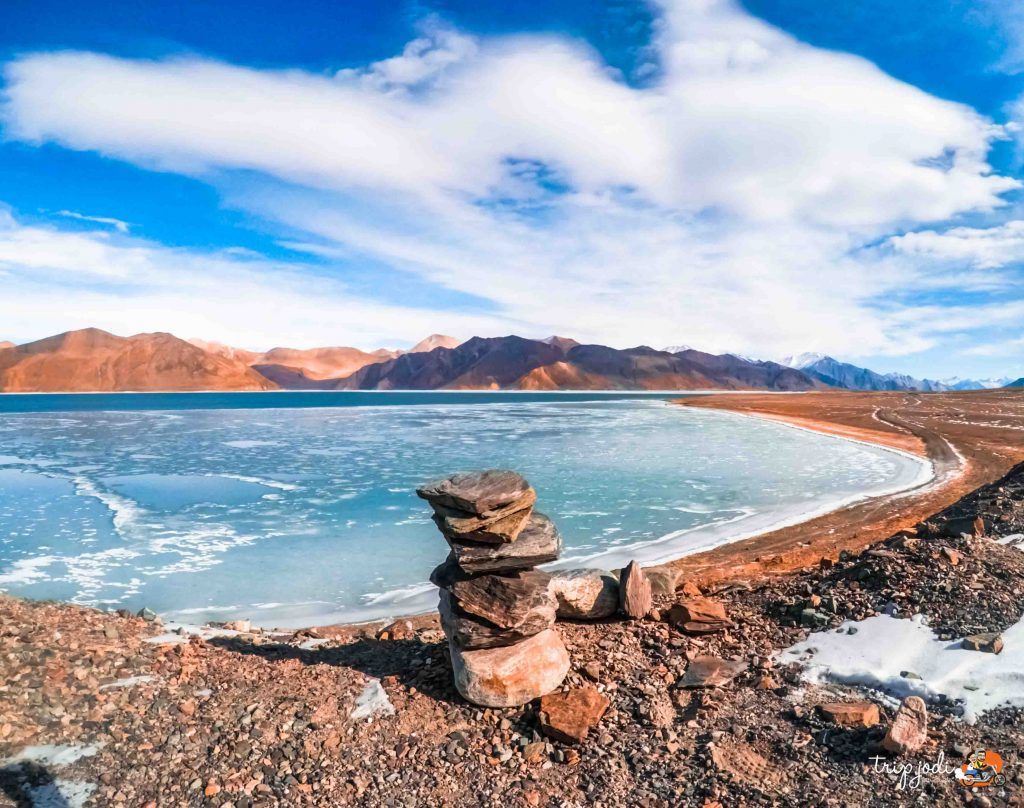Exploring Ladakh's lakes is more than a scenic experience; it’s an encounter with nature in one of its most untouched forms. From the world-famous Pangong Tso to the hidden gem Yarab Tso, each lake in Ladakh offers something unique—changing colors, stunning reflections, serene surroundings, or vibrant wildlife. Whether you're drawn to the tranquility of Tso Moriri, the quiet charm of the twin lakes, or the grandeur of Pangong Tso, these lakes offer experiences that are as inspiring as they are unforgettable.
Visiting the high-altitude lakes of Ladakh is an unforgettable experience, but the rugged terrain and extreme altitudes require thoughtful preparation. Here are some important considerations to keep in mind for a safe and enjoyable trip to Ladakh’s stunning lakes:
1. Acclimatization to Altitude
- Ladakh's high-altitude lakes, such as Pangong Tso and Tso Moriri, are located at elevations above 4,000 meters. Altitude sickness is a real risk due to the reduced oxygen levels at these heights.
- Spend a couple of days in Leh (3,500 meters) to acclimatize before heading to even higher elevations. Avoid exerting yourself too much initially, stay hydrated, and consider medications like acetazolamide (Diamox) if needed (consult a doctor beforehand).
2. Proper Clothing and Gear
- Temperatures at high-altitude lakes can drop dramatically, especially at night. Ladakh's climate can also be windy, which adds to the chill factor.
- Pack in layers—thermals, fleece jackets, and a waterproof outer layer. Woolen hats, gloves, and warm socks are also essential. Sunglasses with UV protection, high-SPF sunscreen, and lip balm are necessary as the sun's intensity is strong at high altitudes.
3. Stay Hydrated
- The dry air at high altitudes leads to quicker dehydration, which can worsen altitude sickness.
- Drink water frequently, even if you don't feel thirsty. Avoid alcohol and caffeine as they can contribute to dehydration. Carry a reusable water bottle, and consider using a filter or purification tablets if you plan to refill from local water sources.
4. Plan for Limited Facilities
- Ladakh’s lakes are in remote areas with limited access to shops, ATMs, and other facilities.
- Stock up on essentials like snacks, water, medication, and toiletries in Leh before heading to the lakes. Bring cash, as digital payments and ATMs may not be available in remote areas.
5. Prepare for Limited Connectivity
- Internet and mobile networks are often unavailable or very limited at Ladakh's high-altitude lakes, as these areas are remote.
- Let someone know your travel plans before you leave Leh. If connectivity is important, consider getting a postpaid BSNL or Jio SIM, as these networks have the best (though limited) reach in Ladakh.
6. Respect the Local Ecosystem
- Ladakh's lakes and surroundings are ecologically sensitive, and even small actions can have a big impact.
- Avoid littering, respect wildlife, and refrain from disturbing local flora. Leave no trace—bring back all waste with you. If you're camping, follow eco-friendly practices and use biodegradable products.
7. Carry a First Aid Kit
- Medical facilities are limited around these lakes, so it's crucial to have basic medical supplies on hand.
- Pack altitude sickness medication, pain relievers, motion sickness tablets, a thermometer, adhesive bandages, antiseptics, and any personal medications.
8. Check Permits and Documentation
- Certain lakes, such as Pangong Tso and Tso Moriri, require an Inner Line Permit (ILP) due to their proximity to sensitive border areas.
- The ILP can be obtained online or in Leh from the District Magistrate’s Office. Ensure your permit covers all planned areas and carry both the permit and copies of your ID.
9. Be Mindful of Local Customs and Culture
- Ladakh is home to rich Buddhist and local traditions, which travelers are encouraged to respect.
- Be mindful of religious sites, ask for permission before photographing locals, and engage respectfully with the community. Avoid loud noise and be courteous to other travelers.
10. Choose the Right Time to Visit
- Weather conditions can change quickly at high altitudes, and winter can make these areas inaccessible.
- The best time to visit is between May and September, when the weather is milder and roads are open. Avoid monsoon season, as landslides can occur, and consult weather forecasts before planning day trips to the lakes.
By following these tips, you'll be well-prepared to experience Ladakh’s high-altitude lakes safely and responsibly, leaving only footprints and taking with you memories of an incredible Himalayan adventure.


